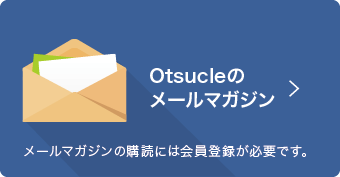1. It all starts with you getting in touch
If you want to obtain research funds or have a go at crowdfunding, don’t hesitate to submit an outline of your research or project in the enquiry form below. Our staff will check it out and get back to you.
You may have questions about crowdfunding like, “Is my research theme acceptable?”, “How long does it take?”, “What kind of PR do I need to do?”. Or you may want to know “What is crowdfunding?”, and “Who will actually pay the research costs?”. The first thing to do is to get in touch. You can get a better understanding by looking through the FAQ (https://otsucle.jp/faq/challenger/), which addresses many questions that have already been asked.
2. Hearing (about 1 hour)
First you’ll have a hearing with our staff. Basically, our staff will go to a specified place to meet that suits your schedule.
A face-to-face meeting is best, but if it’s difficult, the hearing can be done on Skype.
The first hearing is an opportunity for you to explain the outline of your research or project. Then our staff will explain the overall schedule, and determine the subsequent steps.
(1) Story
Let’s consider the story.
A story is an important element of a successful project. However compelling the content of a project may be, if you don’t convey this to the general public, the project won’t attract funds. So our staff will help you to make a compelling story that brings out the maximum appeal of your project. After the initial hearing, we’ll have numerous sessions to create a powerful story.
(2) Funding target
Next we set a funding target.
Our crowdfunding basically uses an all-or-nothing format, and if the funding target isn’t met, the supporters are refunded the full amount. So it’s important not to set the target amount too high, or too low. Our staff will advise you fully on this.
(3) The project period (application period)
The project period is set at about 60 days.
However, it’s possible to shorten or extend it depending on the funding target, content of the project, and your normal work situation. Note that once the project begins, you can’t shorten or extend the project period.
(4) Ideas for returns (purchase-type) and gifts (donation-type)
Let’s consider the return or gift.
Our staff will help you consider the return or gift to offer to those who support you. Even with the donation-type, you can offer a gift to your supporters, so it’s best to offer one. Returns and gift are typically mugs, T-shirts, books, science cafés and so on, but there are no particular rules. Let us know if you have a good idea for a return or gift!
(5) How to use PR tools
Lean how to use PR tools.
To succeed at crowdfunding, you have to solicit support from many supporters. For this, you need to start your PR activities before the start date of the project to lay the groundwork. For example, crowdfunding basically takes place on the internet, so in addition to emailing your acquaintances to ask for support, it’s also effective to use social media like Facebook and Twitter that can reach any number of people. So first of all, learn how to use tools like social media effectively, and gradually expand the scope of your PR efforts. Our staff will help you.
(6) Decide the schedule
We’ll confirm the project schedule.
After the hearing, we’ll confirm the schedule for completion of the project page, making the video, and the start date of the project. In addition, we’ll explain the important points for undertaking a project.
3. Prepare an explanation of the project
Prepare an outline of your project.
You’ll prepare an explanation of your project based on the story determined in the initial hearing. To make the best possible document, the staff will hold several sessions with you to improve it.
You’ll also need to prepare drawings, photos, and images of the returns to insert in your explanation. When the project outline is nearly ready, we’ll consider a compelling title.
4. Decide the return or gift
Next we’ll decide the return or gift.
Bearing in mind what we discussed in the initial hearing and the content of your project outline, we’ll work together to decide the amount or content of the return or gift.
5. Decide the PR strategy
Then we’ll decide the PR strategy before and after the launch of your project.
Our staff will work with you to develop a strategy for gathering supporters. Specifically, we’ll consider plans and procedures for asking acquaintances and colleagues for support, and for using social media like Facebook and Twitter for spreading your message far and wide.
6. Filming a movie for your project
We’ll film a short movie to introduce your project.
We think a movie is essential, not only to convey the content of the project, but also to appeal directly and personally to supporters. In order to make the movie more appealing, images and videos might be inserted in the project introductory movie. In that case, we’ll ask you to prepare the images or video. Our staff will prepare the script. The staff will also do the filming and editing, so there’s nothing to worry about.
7. The project launch
Now it’s time to launch the project.
Based on the PR strategy, it’s time to get your publicity into gear towards the success of your project.
8. Congratulations on a successful project!
Congratulations on a successful project!
After your project succeeds, we’ll have a meeting to discuss the timing of the transfer of the funding obtained, the production and delivery of the return or gift, and when to report on the results.
9. Project progress reports
You can update the progress report section on your project page whenever you wish.
Please report to your supporters on the progress of your project once you start the project activities after obtaining the funding.



